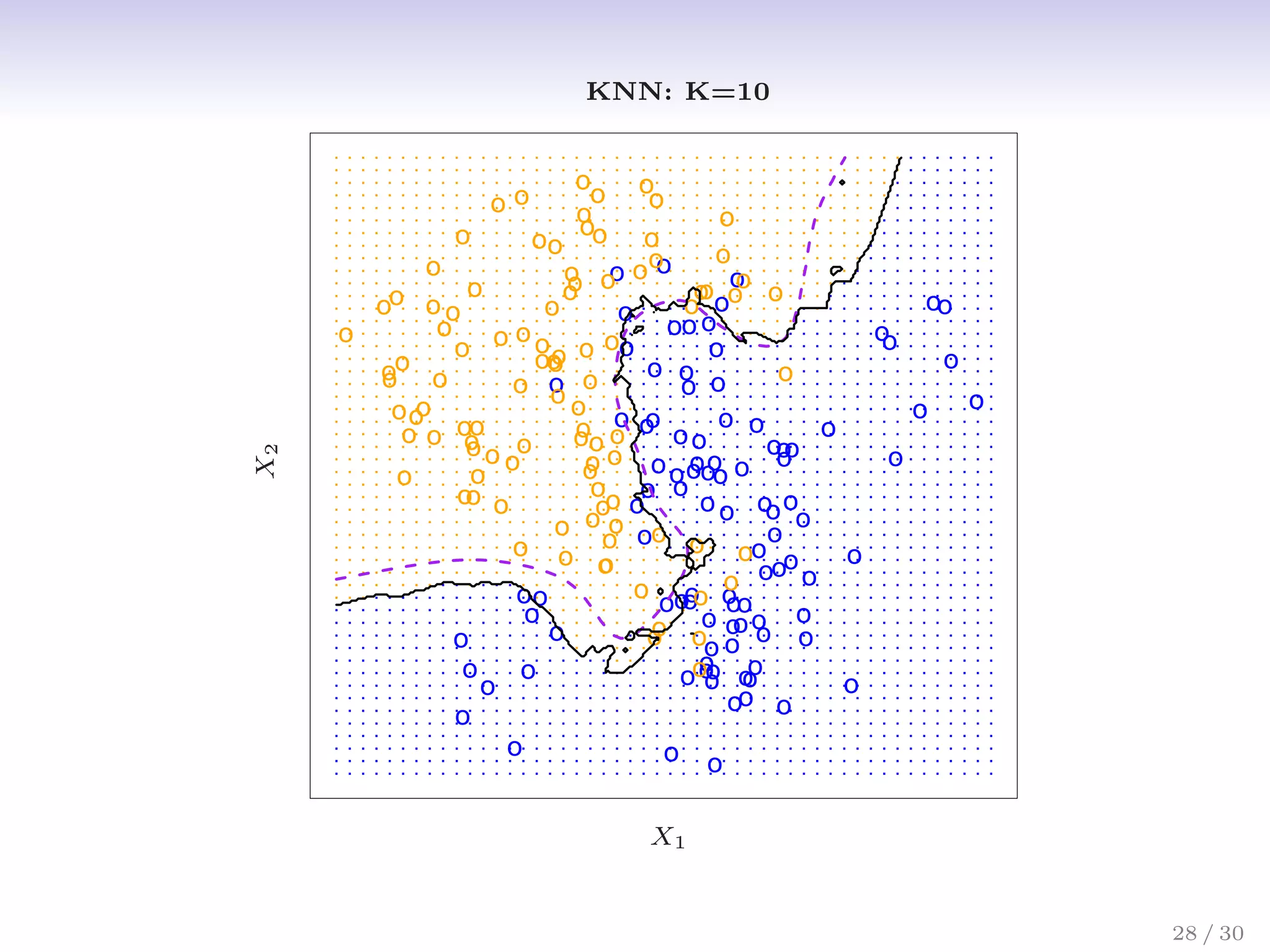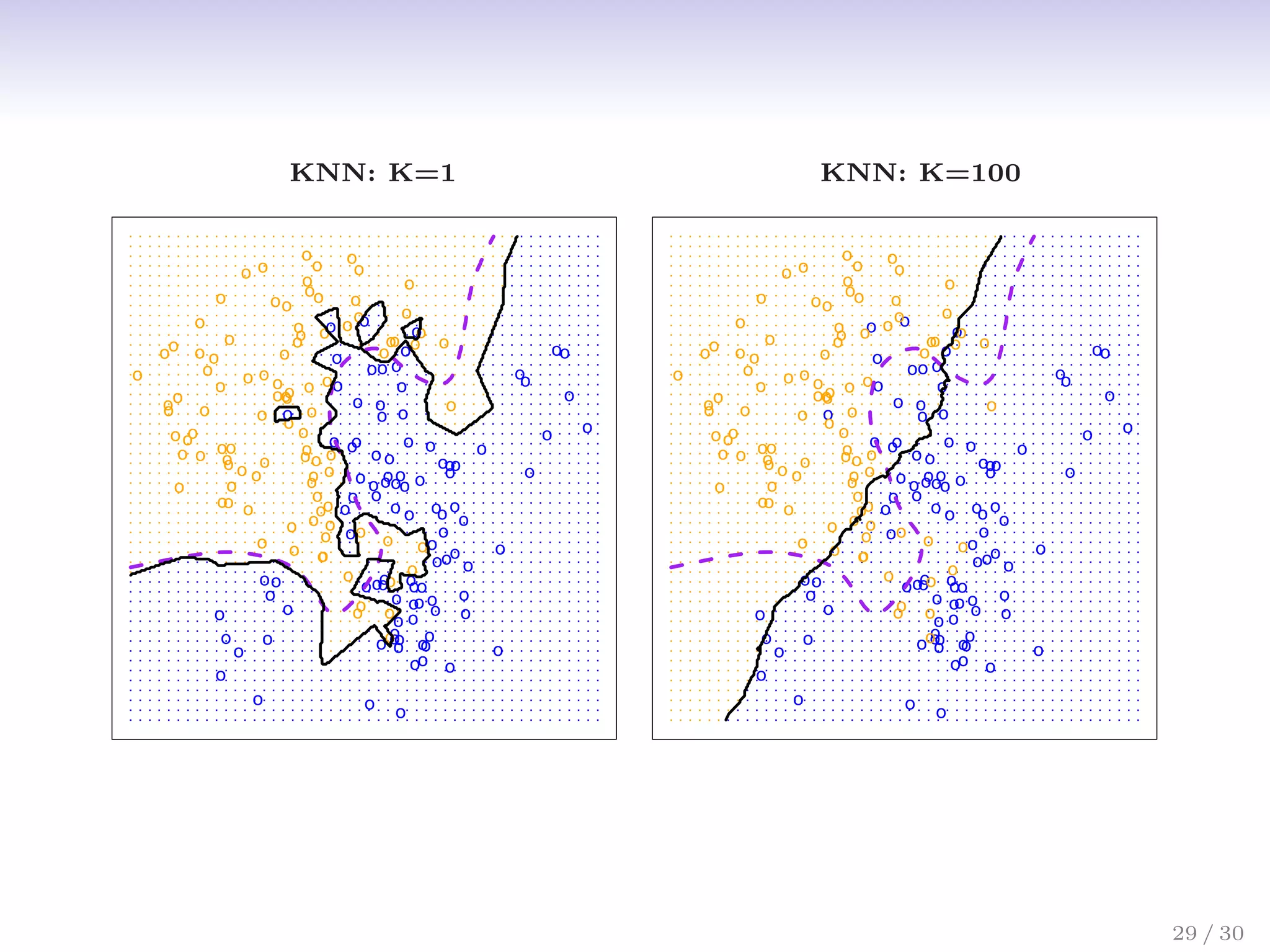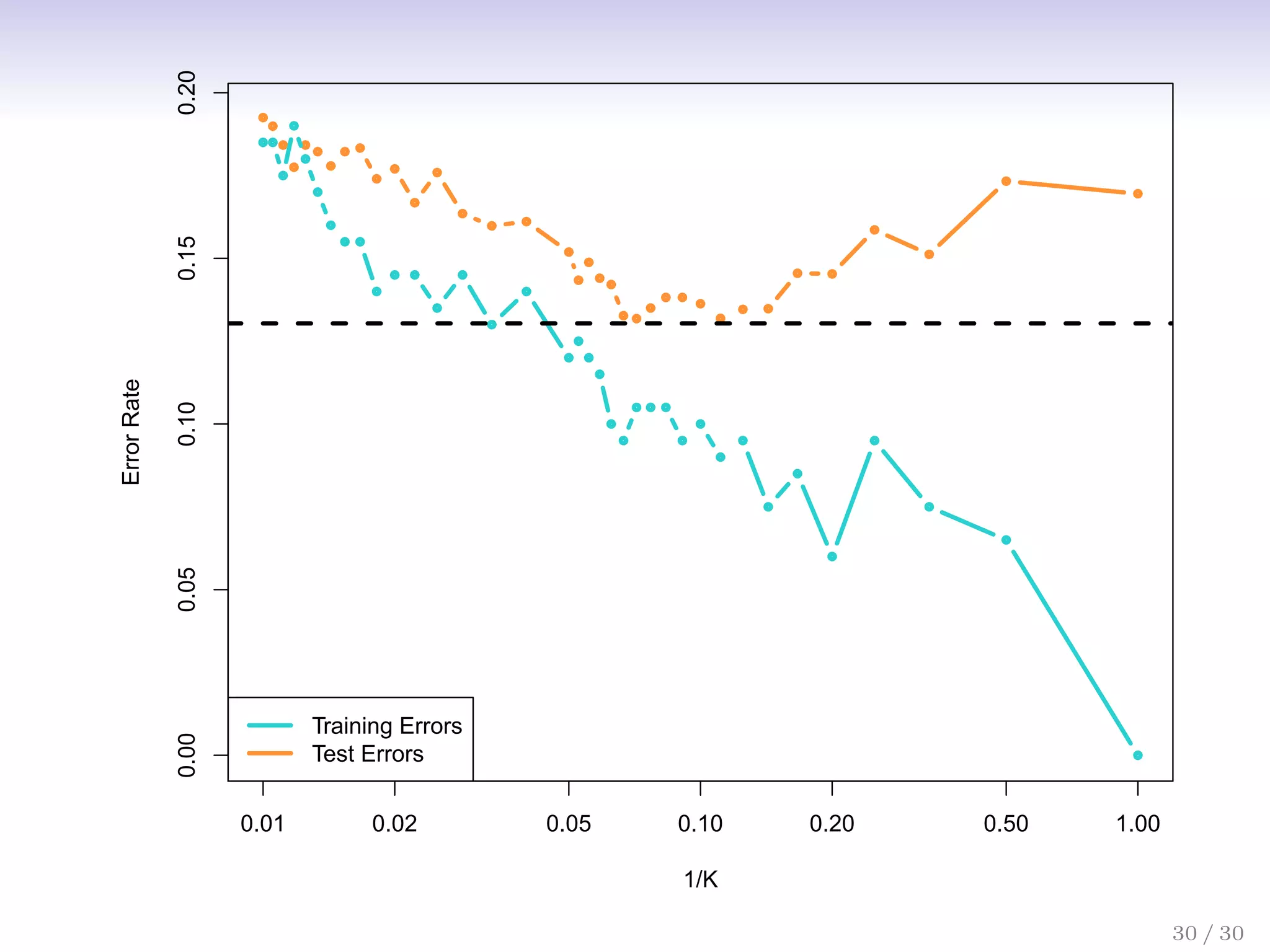Statistical learning is a method for using variables like TV, radio and newspaper advertising spending (features) to predict sales (response). It builds a statistical model, Sales = f(TV, radio, newspaper), to understand the relationship between the features and response. This allows one to make sales predictions based on advertising spending and determine which features have the most influence on sales.
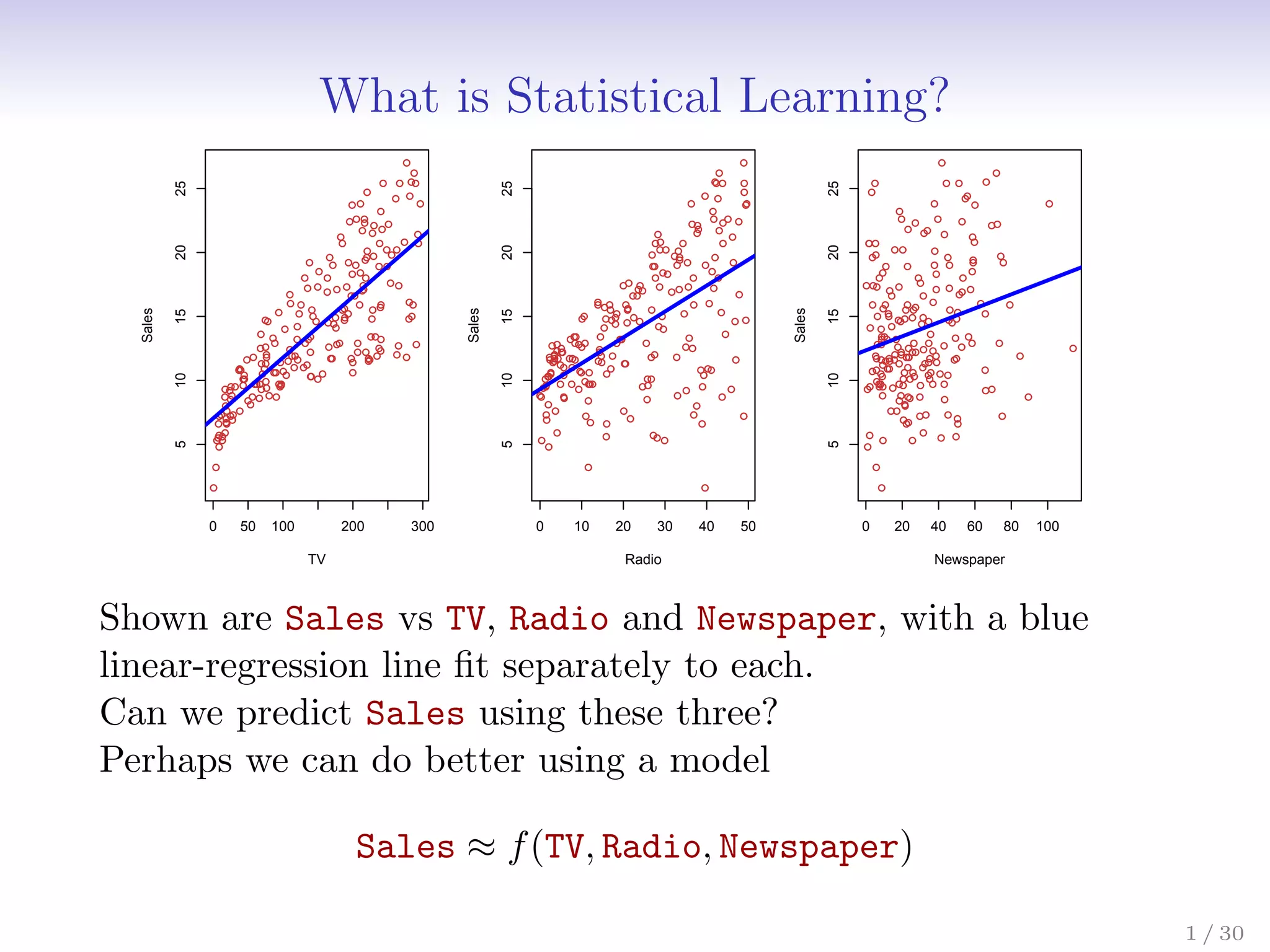
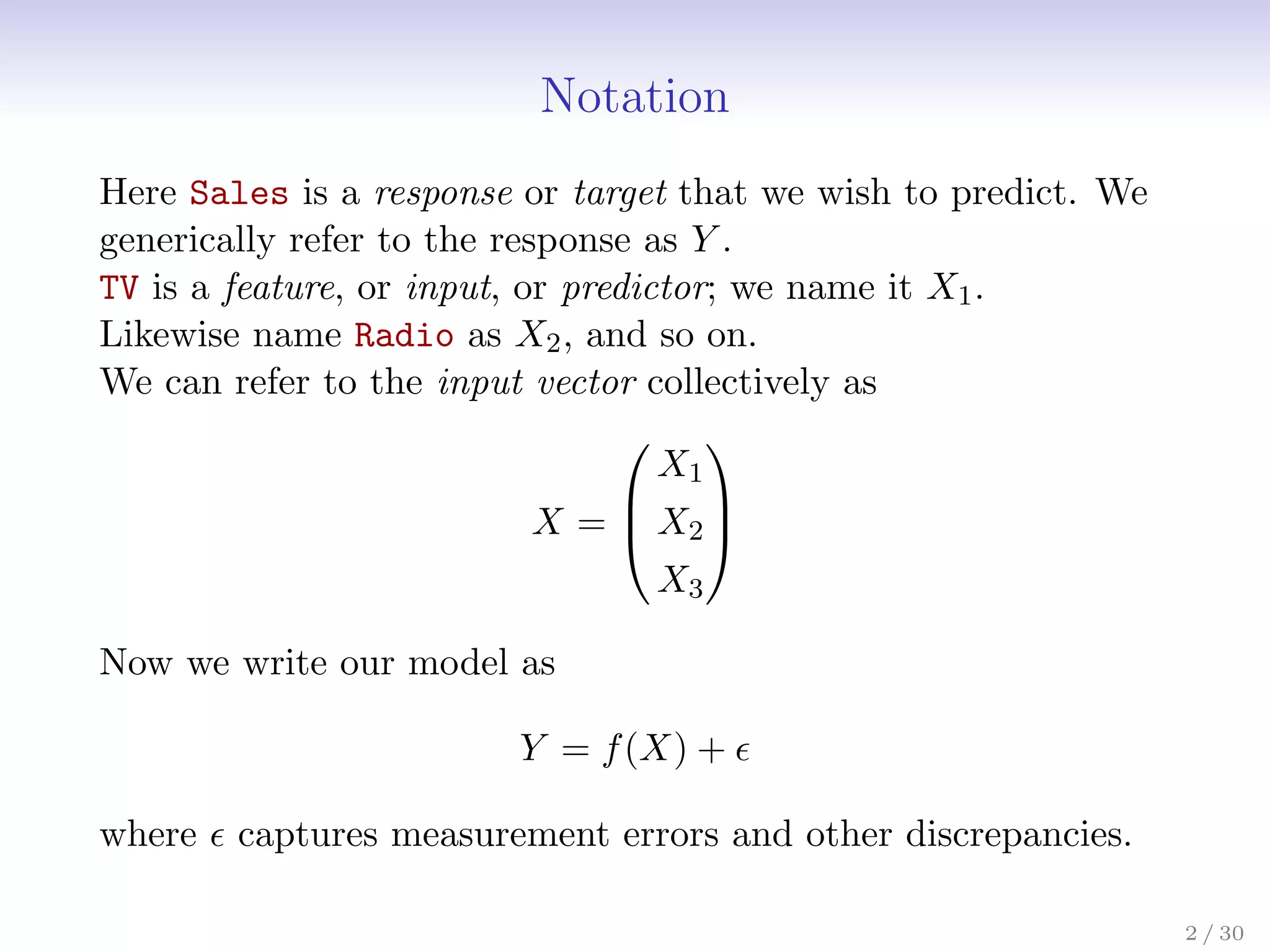
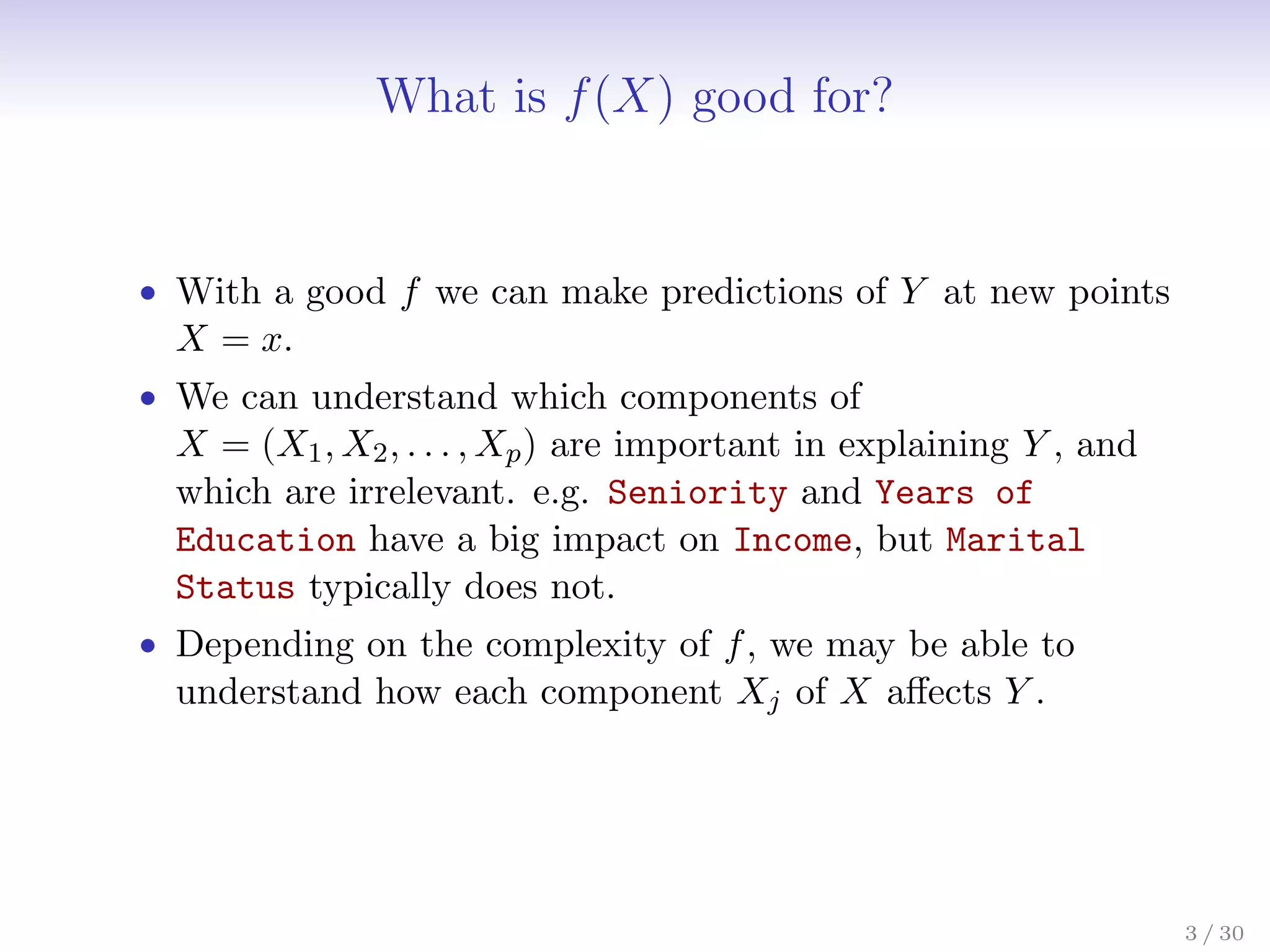
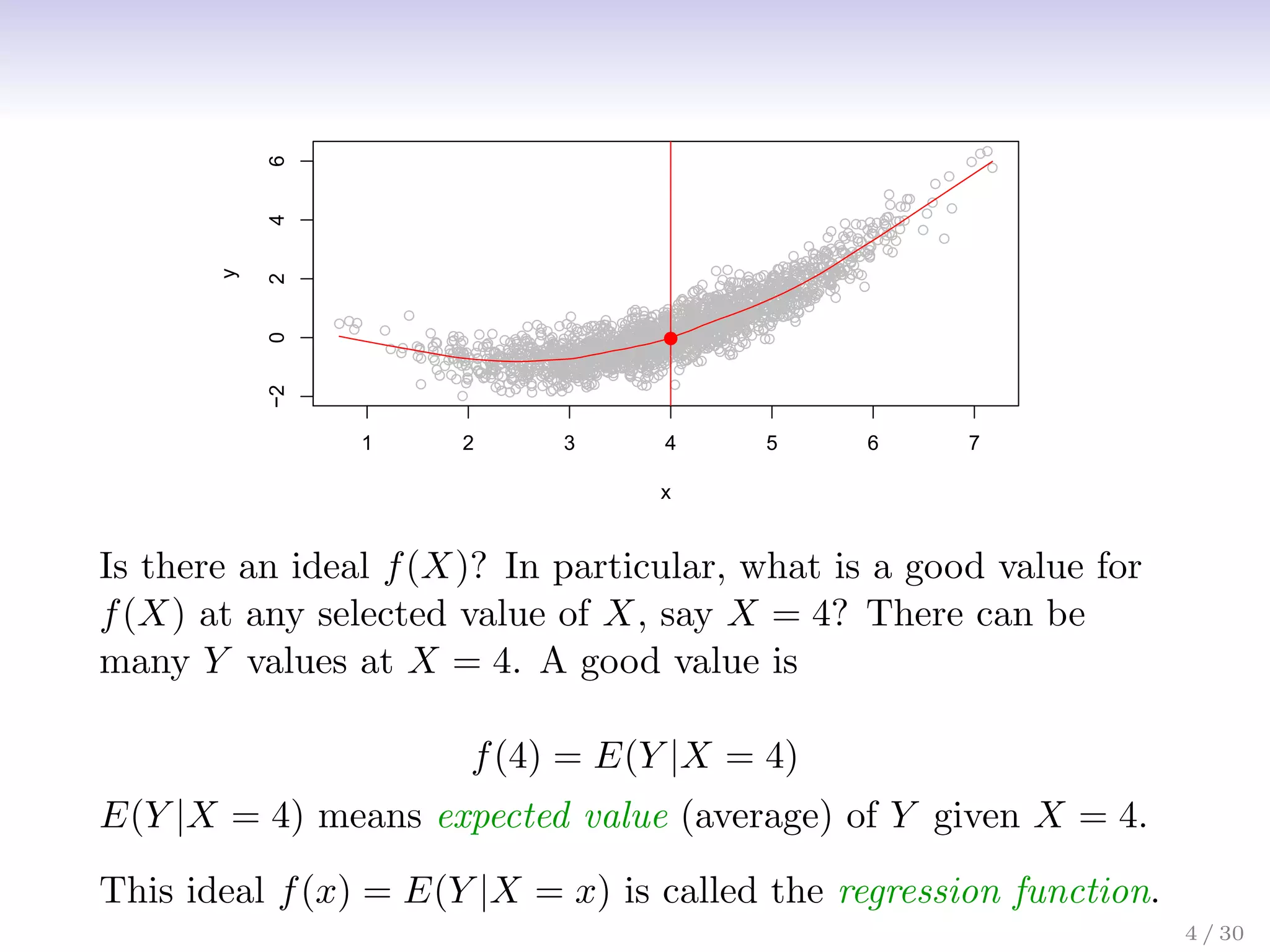
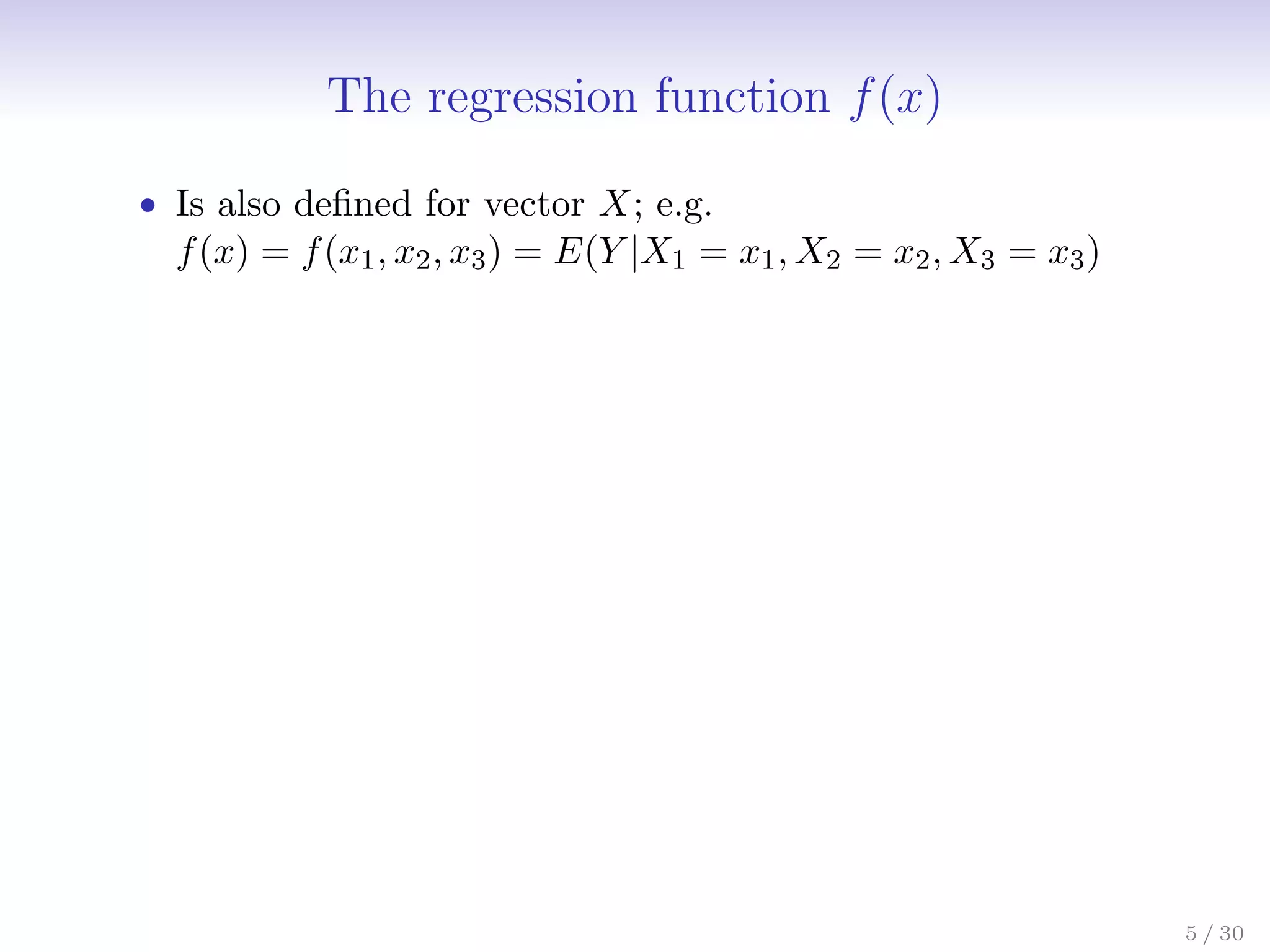
![The regression function f(x)
• Is also defined for vector X; e.g.
f(x) = f(x1, x2, x3) = E(Y |X1 = x1, X2 = x2, X3 = x3)
• Is the ideal or optimal predictor of Y with regard to
mean-squared prediction error: f(x) = E(Y |X = x) is the
function that minimizes E[(Y − g(X))2|X = x] over all
functions g at all points X = x.
5 / 30](https://image.slidesharecdn.com/ch2statisticallearning-230117050556-1e15522a/75/Ch2_Statistical_Learning-pdf-6-2048.jpg)
![The regression function f(x)
• Is also defined for vector X; e.g.
f(x) = f(x1, x2, x3) = E(Y |X1 = x1, X2 = x2, X3 = x3)
• Is the ideal or optimal predictor of Y with regard to
mean-squared prediction error: f(x) = E(Y |X = x) is the
function that minimizes E[(Y − g(X))2|X = x] over all
functions g at all points X = x.
• = Y − f(x) is the irreducible error — i.e. even if we knew
f(x), we would still make errors in prediction, since at each
X = x there is typically a distribution of possible Y values.
5 / 30](https://image.slidesharecdn.com/ch2statisticallearning-230117050556-1e15522a/75/Ch2_Statistical_Learning-pdf-7-2048.jpg)
![The regression function f(x)
• Is also defined for vector X; e.g.
f(x) = f(x1, x2, x3) = E(Y |X1 = x1, X2 = x2, X3 = x3)
• Is the ideal or optimal predictor of Y with regard to
mean-squared prediction error: f(x) = E(Y |X = x) is the
function that minimizes E[(Y − g(X))2|X = x] over all
functions g at all points X = x.
• = Y − f(x) is the irreducible error — i.e. even if we knew
f(x), we would still make errors in prediction, since at each
X = x there is typically a distribution of possible Y values.
• For any estimate ˆ
f(x) of f(x), we have
E[(Y − ˆ
f(X))2
|X = x] = [f(x) − ˆ
f(x)]2
| {z }
Reducible
+ Var()
| {z }
Irreducible
5 / 30](https://image.slidesharecdn.com/ch2statisticallearning-230117050556-1e15522a/75/Ch2_Statistical_Learning-pdf-8-2048.jpg)
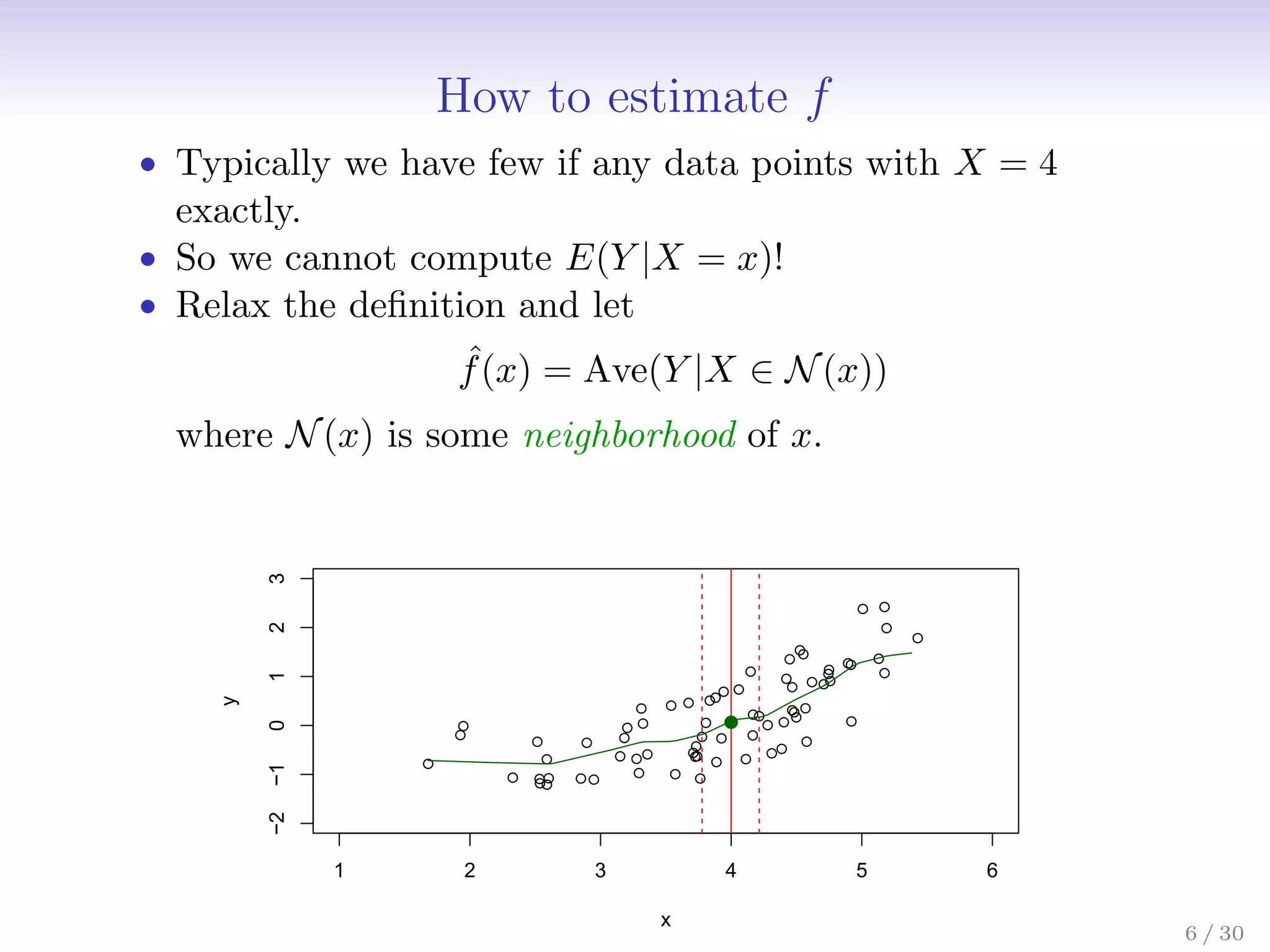

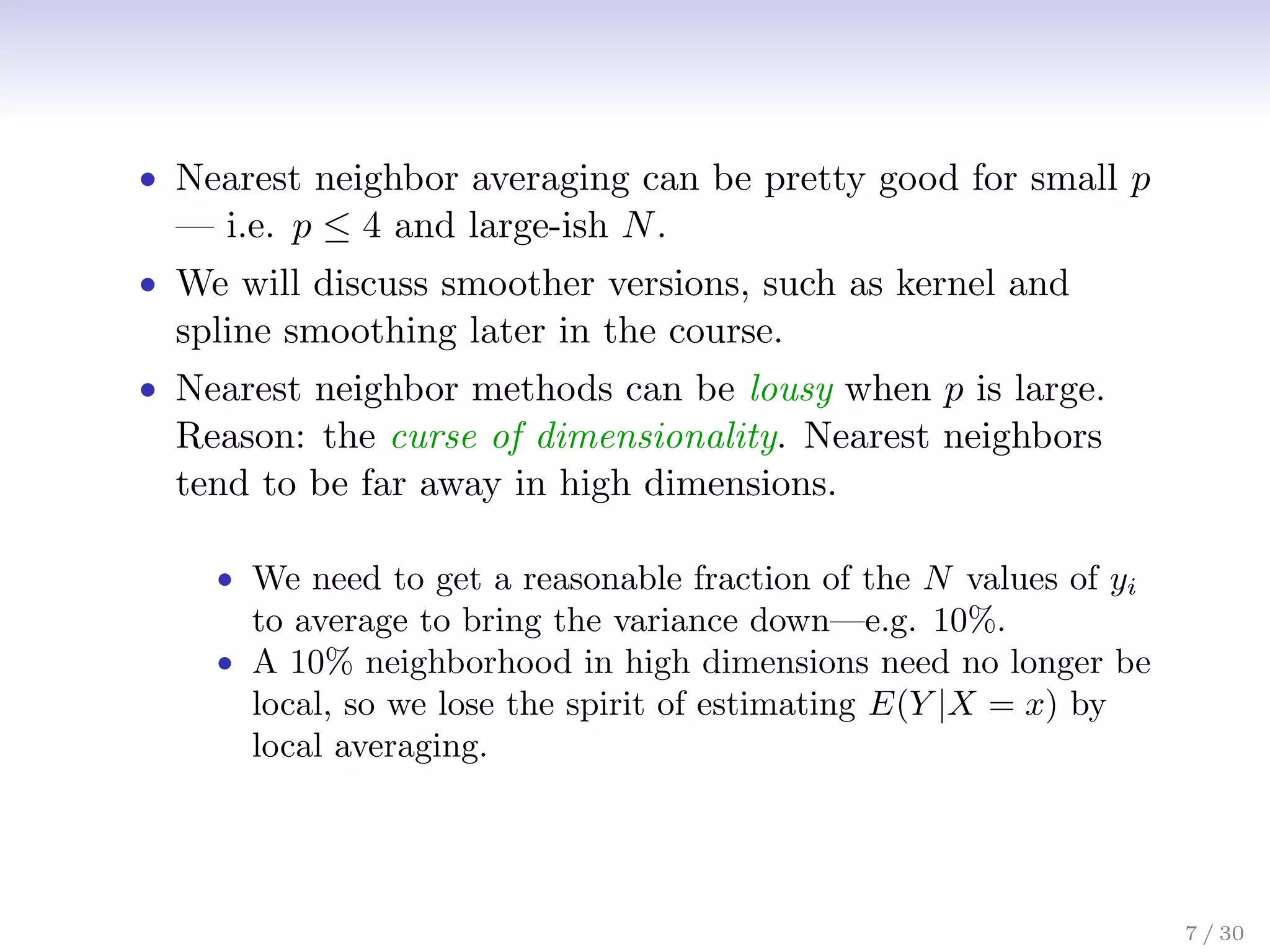
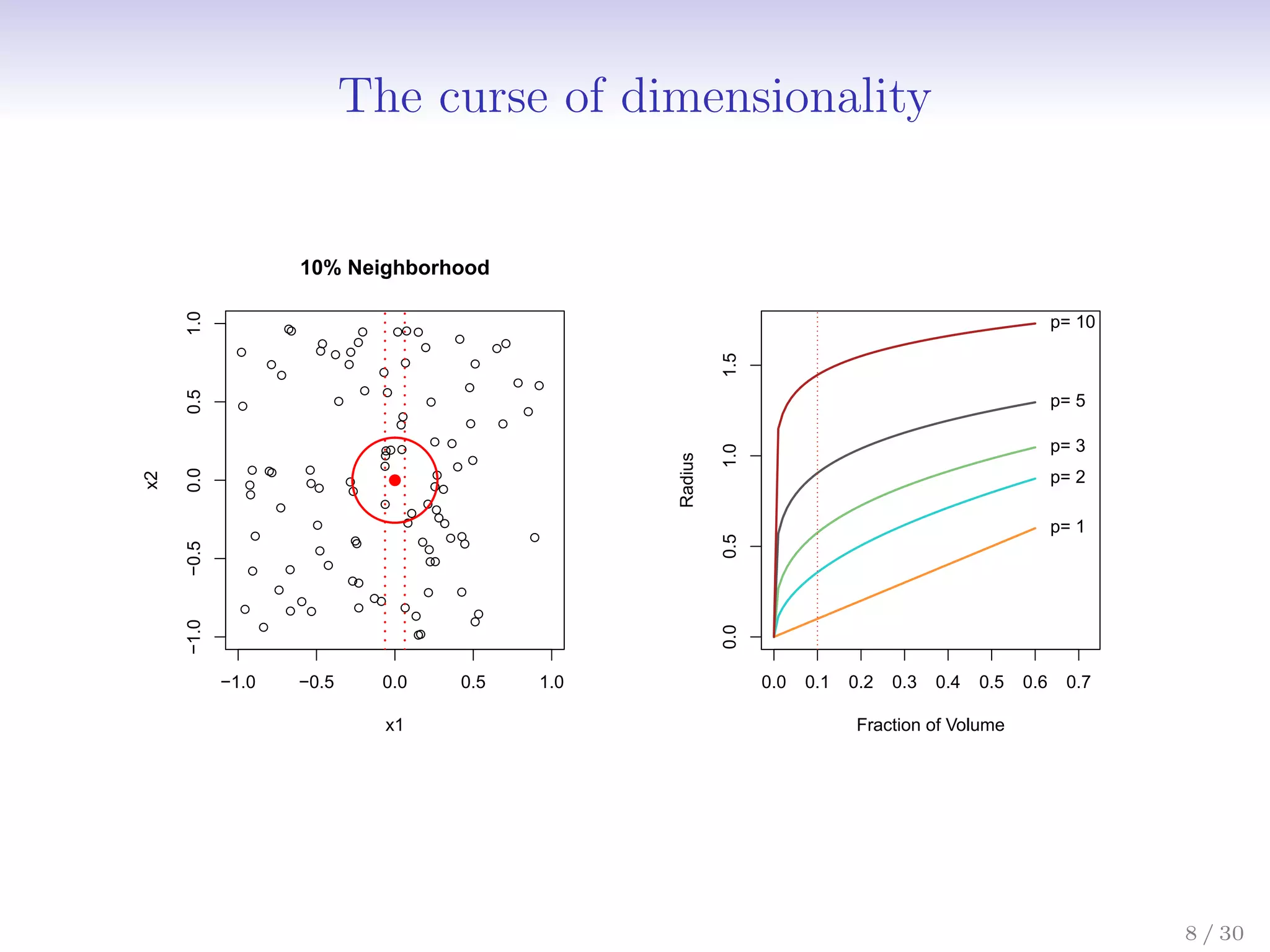
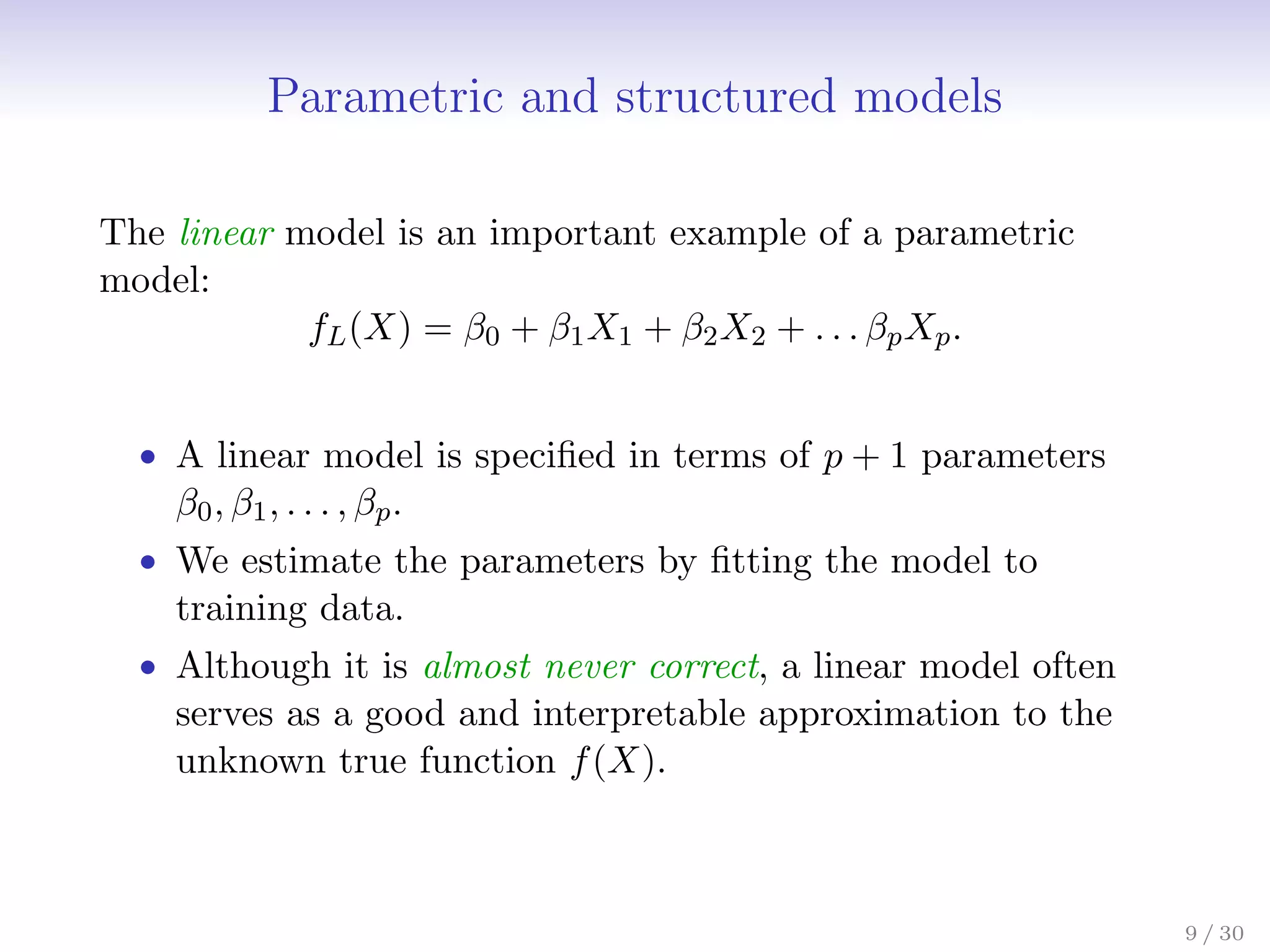

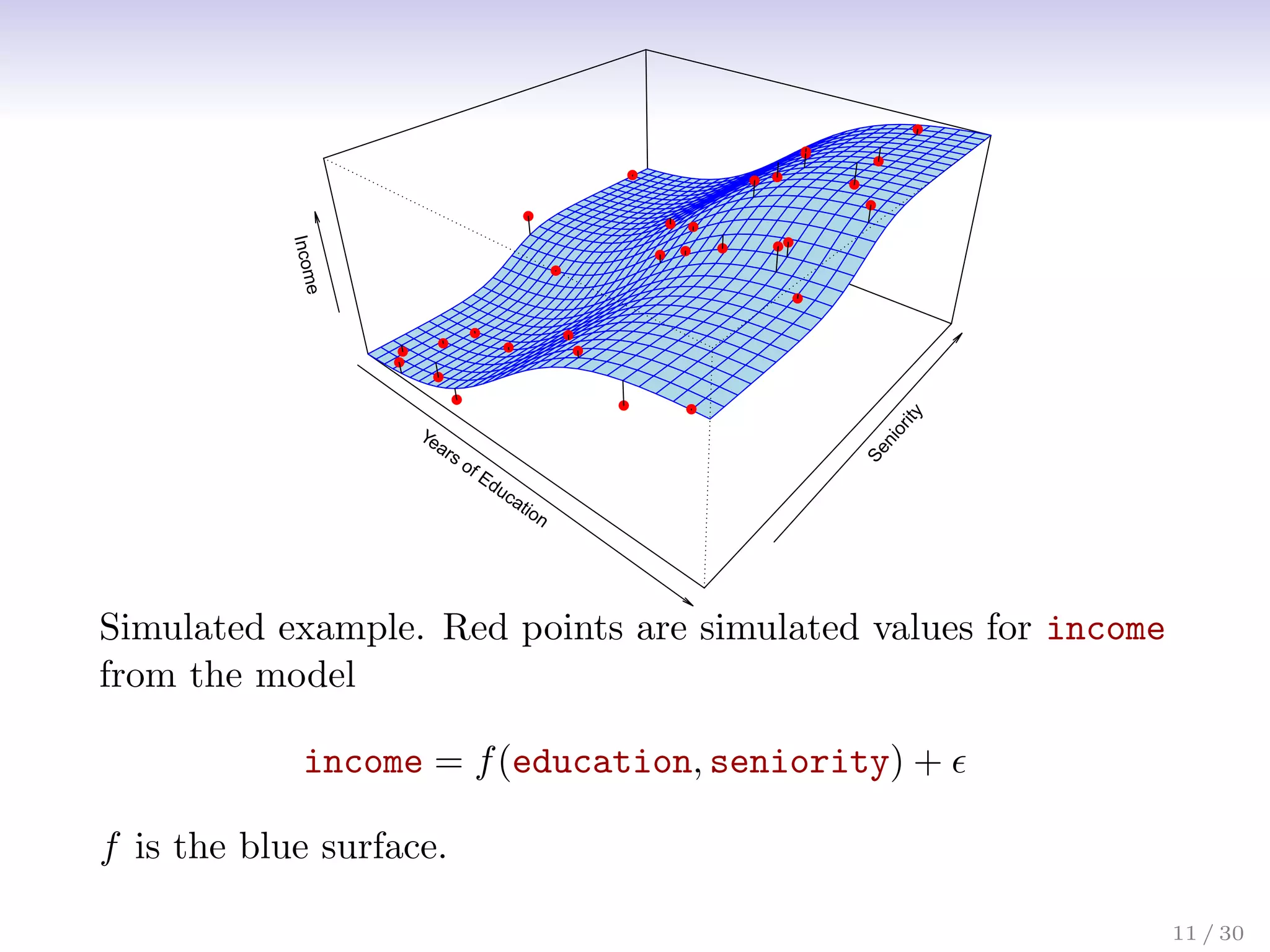
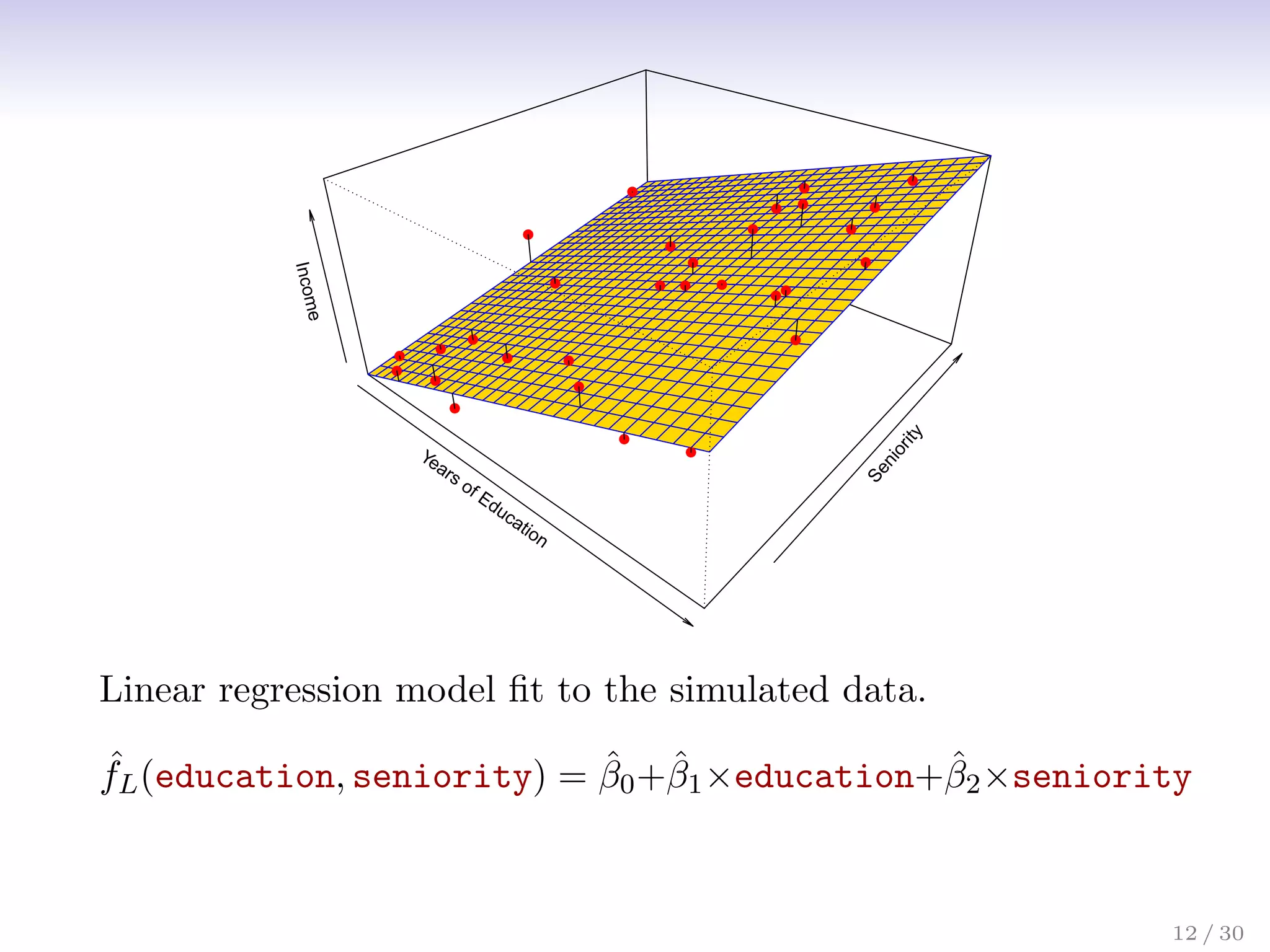
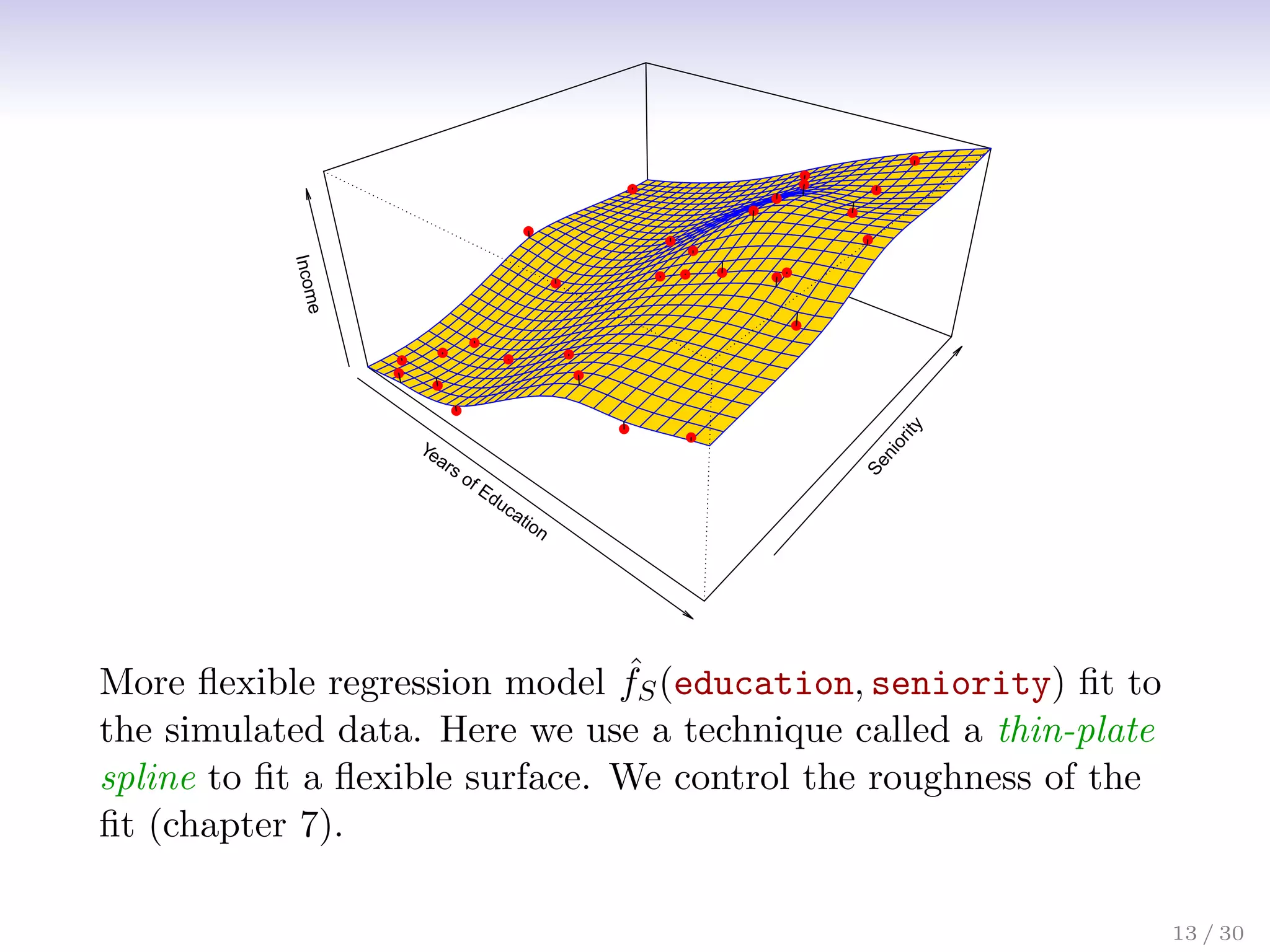
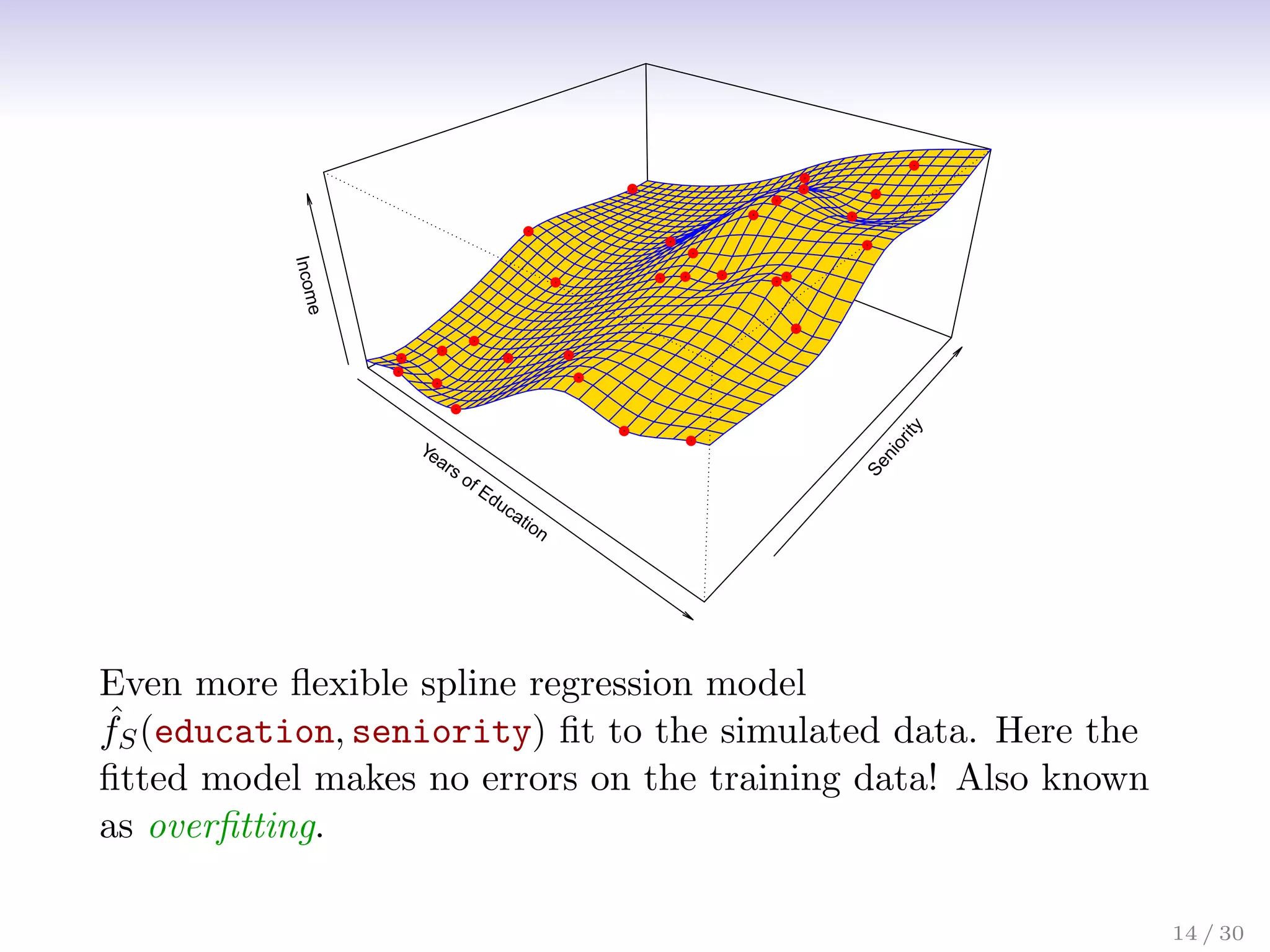
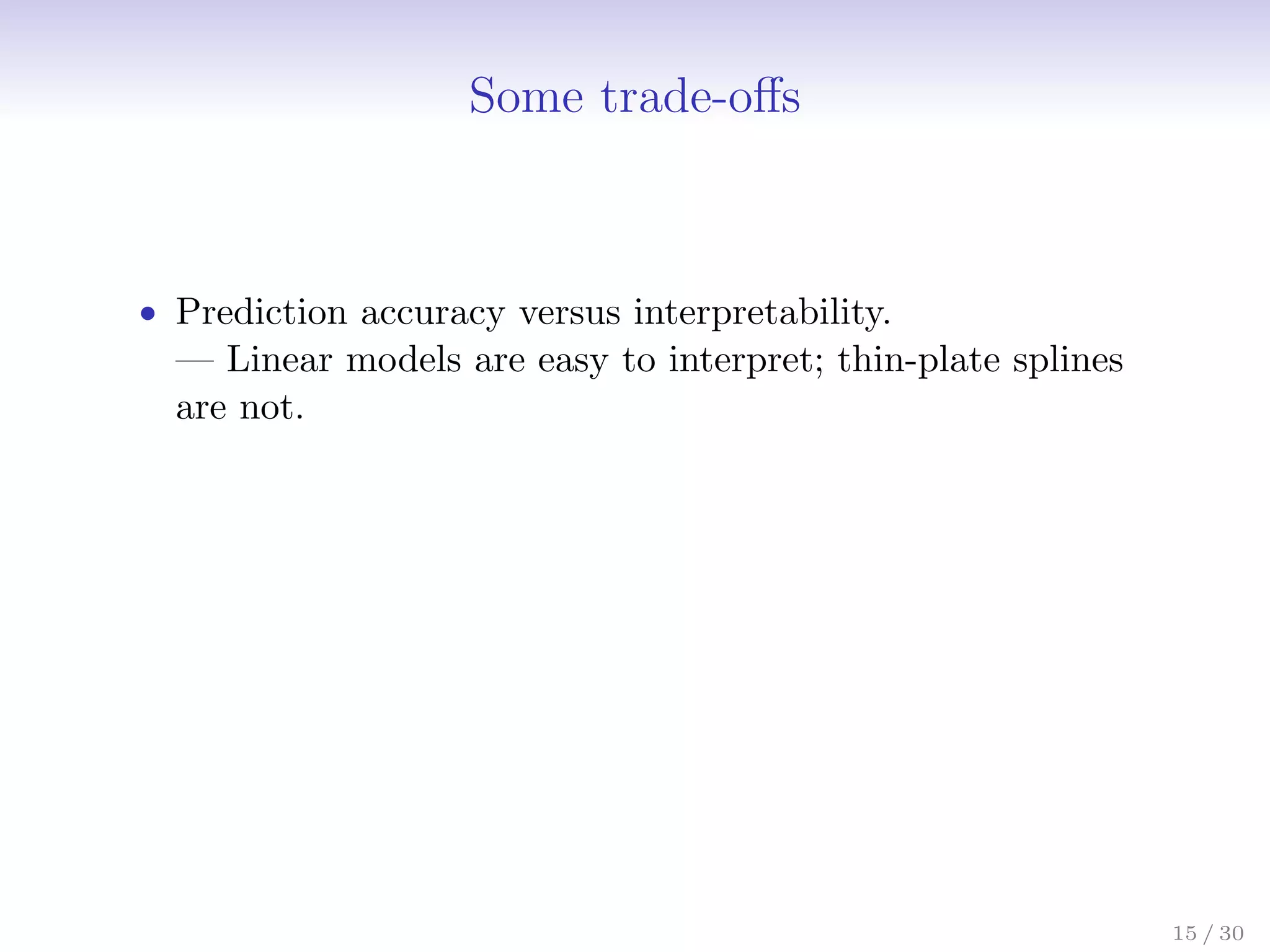
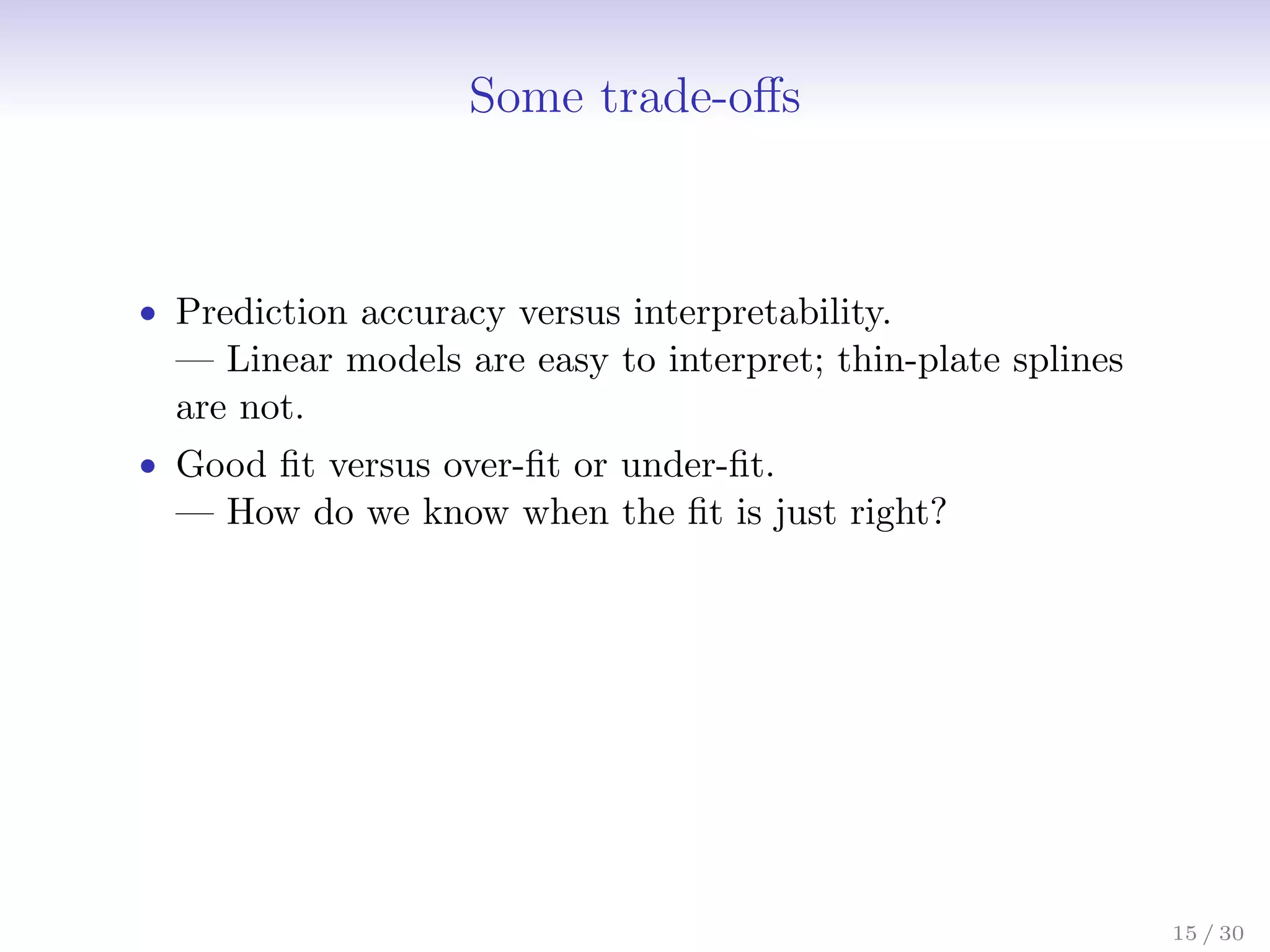
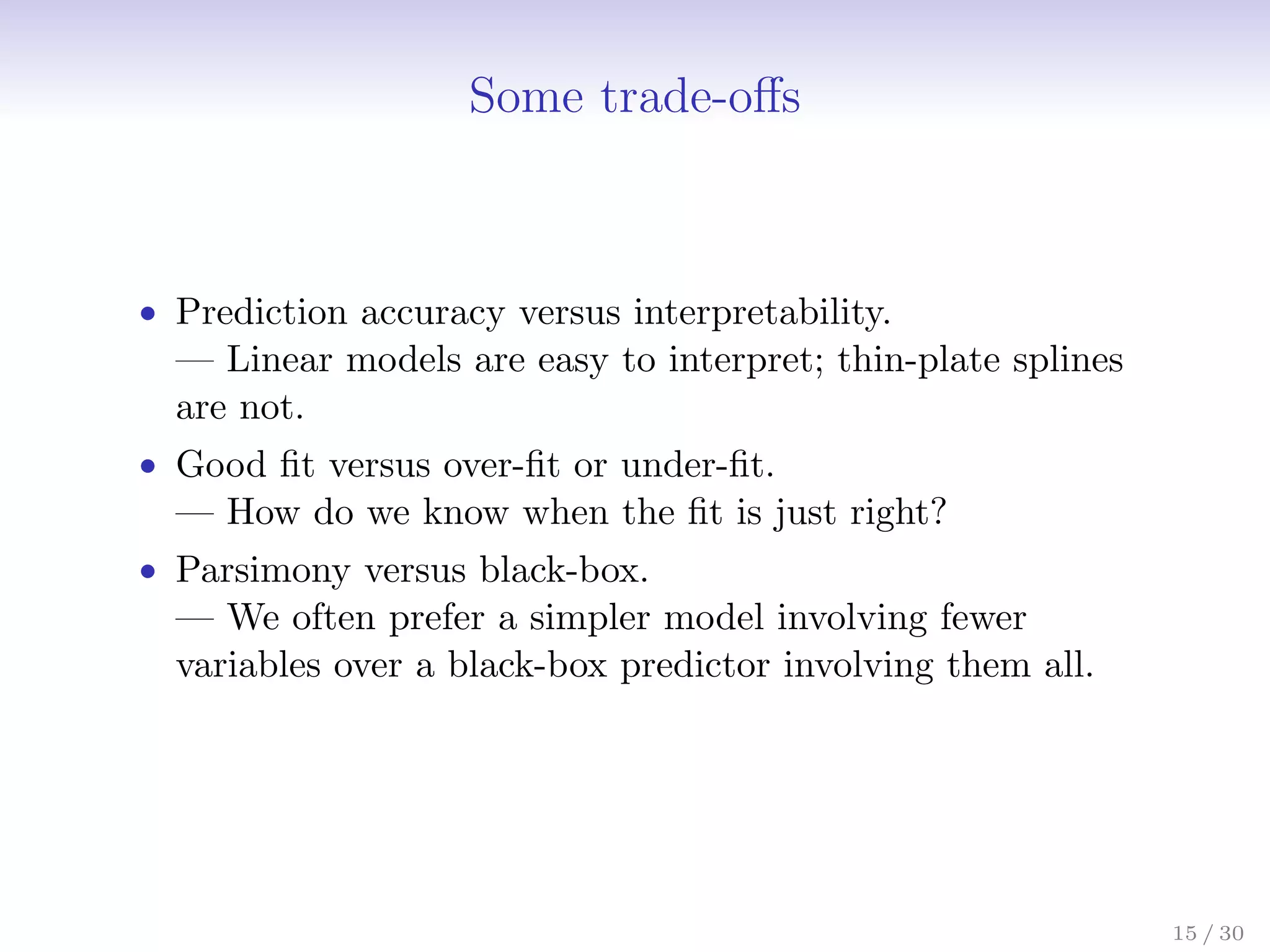
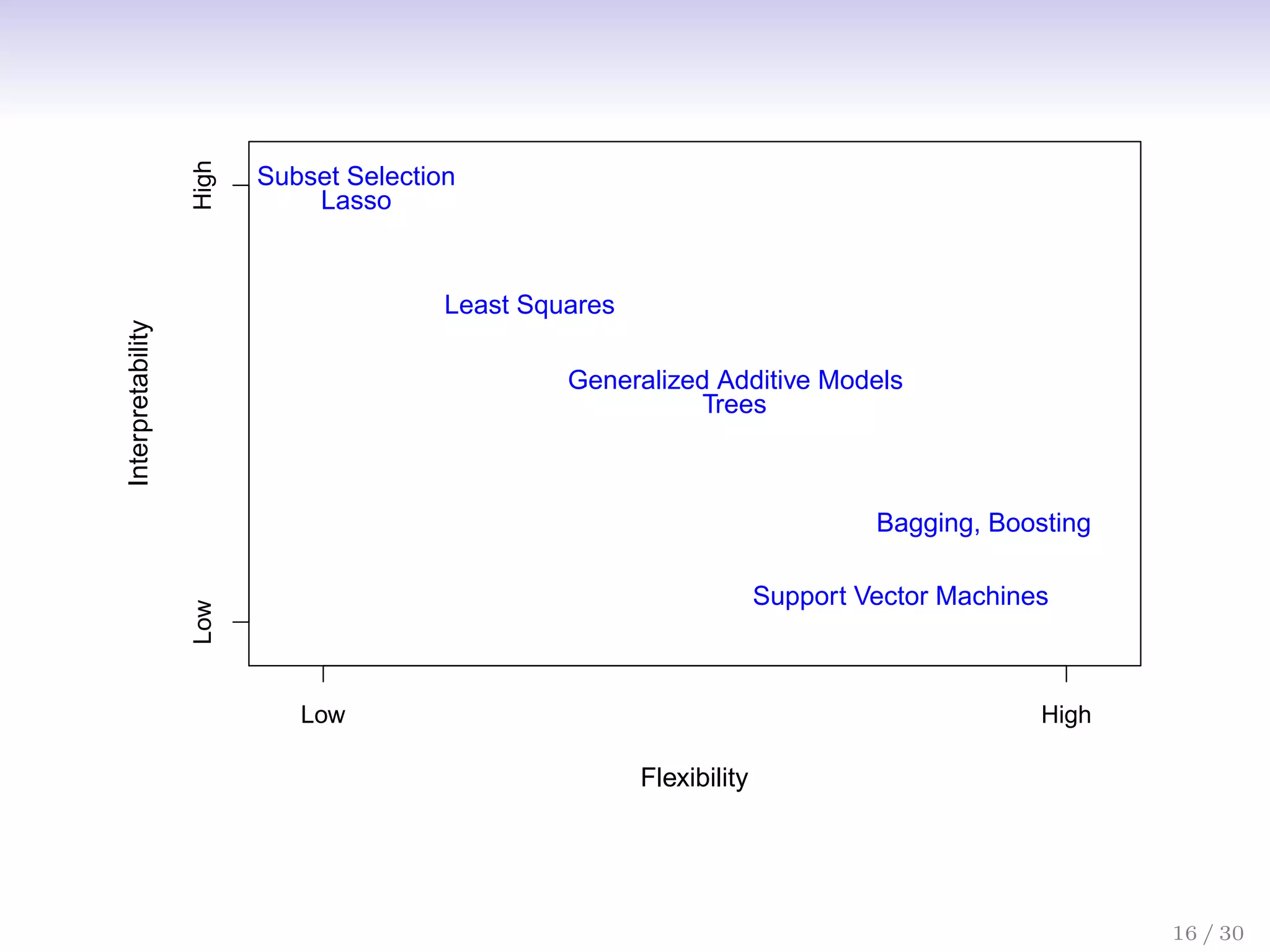
![Assessing Model Accuracy
Suppose we fit a model ˆ
f(x) to some training data
Tr = {xi, yi}N
1 , and we wish to see how well it performs.
• We could compute the average squared prediction error
over Tr:
MSETr = Avei∈Tr[yi − ˆ
f(xi)]2
This may be biased toward more overfit models.
• Instead we should, if possible, compute it using fresh test
data Te = {xi, yi}M
1 :
MSETe = Avei∈Te[yi − ˆ
f(xi)]2
17 / 30](https://image.slidesharecdn.com/ch2statisticallearning-230117050556-1e15522a/75/Ch2_Statistical_Learning-pdf-23-2048.jpg)
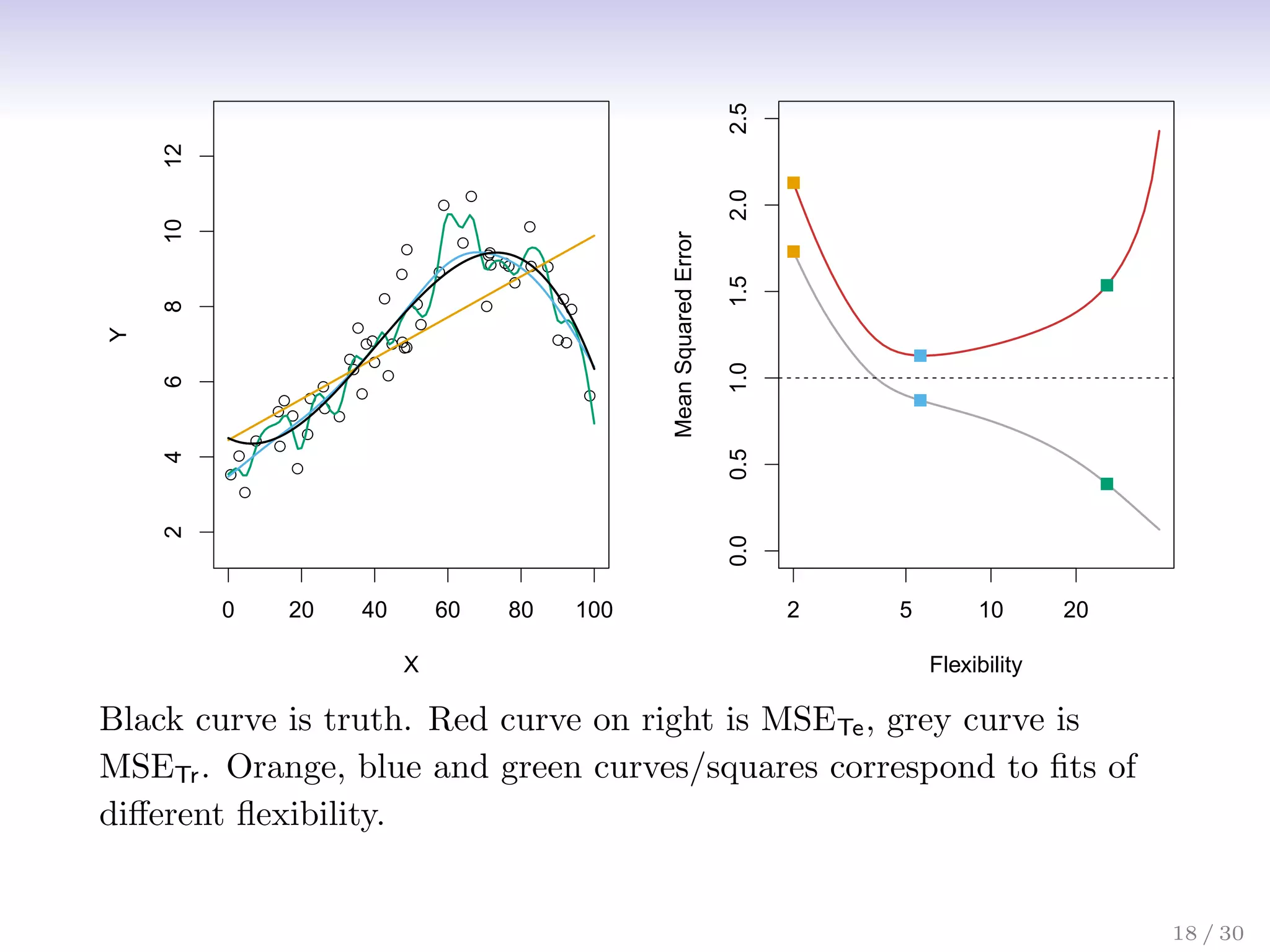
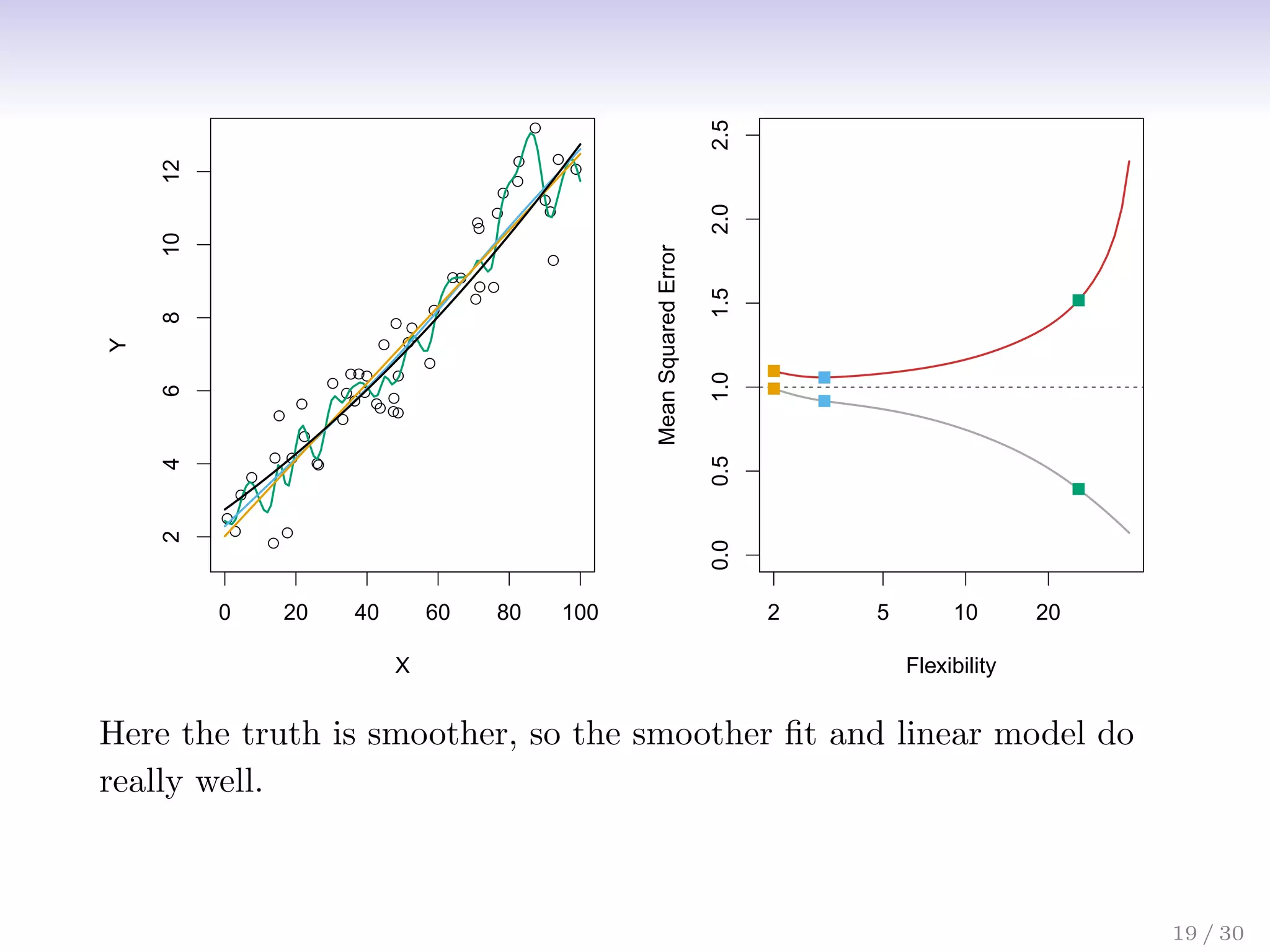
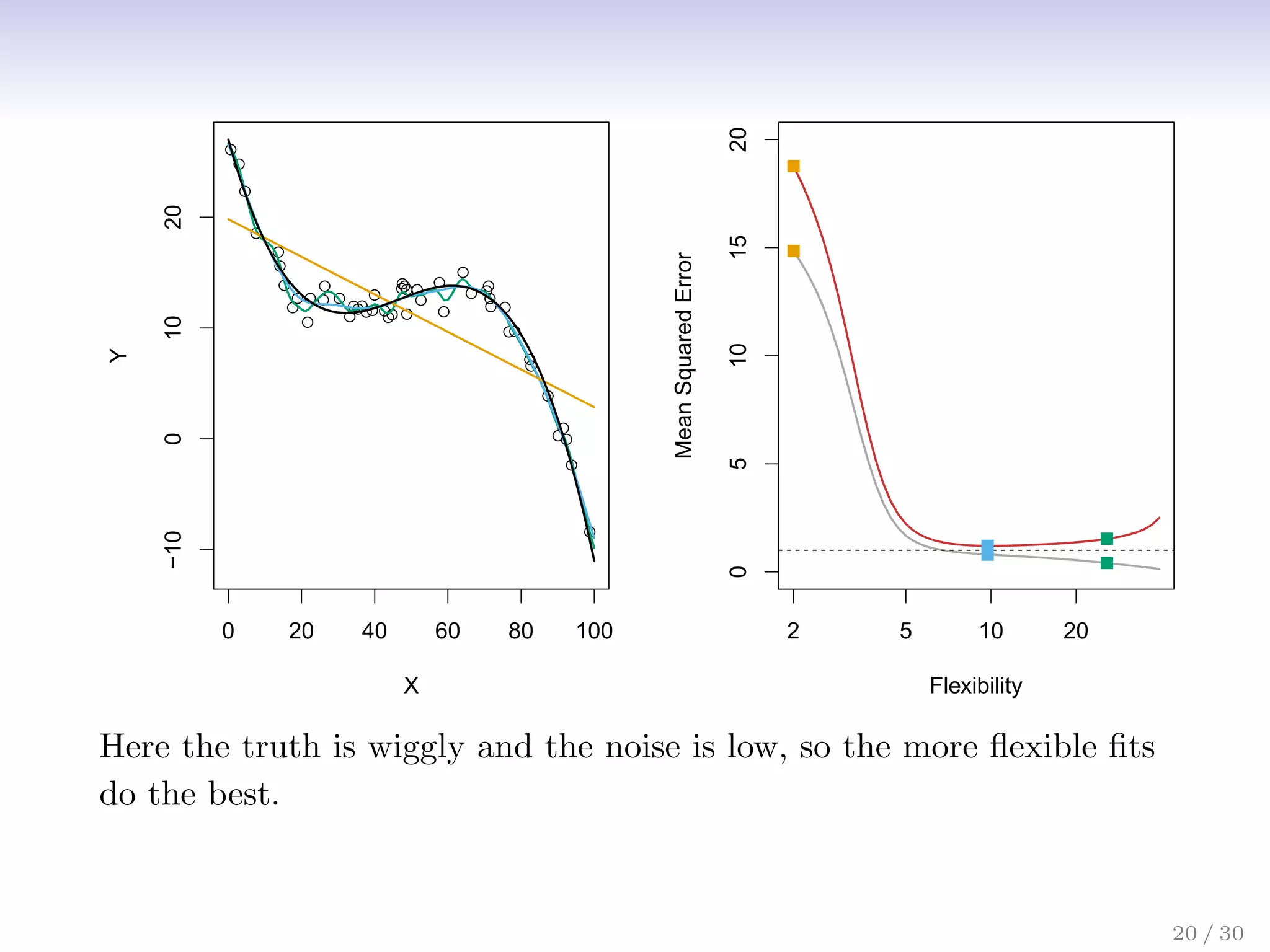
![Bias-Variance Trade-off
Suppose we have fit a model ˆ
f(x) to some training data Tr, and
let (x0, y0) be a test observation drawn from the population. If
the true model is Y = f(X) + (with f(x) = E(Y |X = x)),
then
E
y0 − ˆ
f(x0)
2
= Var( ˆ
f(x0)) + [Bias( ˆ
f(x0))]2
+ Var().
The expectation averages over the variability of y0 as well as
the variability in Tr. Note that Bias( ˆ
f(x0))] = E[ ˆ
f(x0)] − f(x0).
Typically as the flexibility of ˆ
f increases, its variance increases,
and its bias decreases. So choosing the flexibility based on
average test error amounts to a bias-variance trade-off.
21 / 30](https://image.slidesharecdn.com/ch2statisticallearning-230117050556-1e15522a/75/Ch2_Statistical_Learning-pdf-27-2048.jpg)
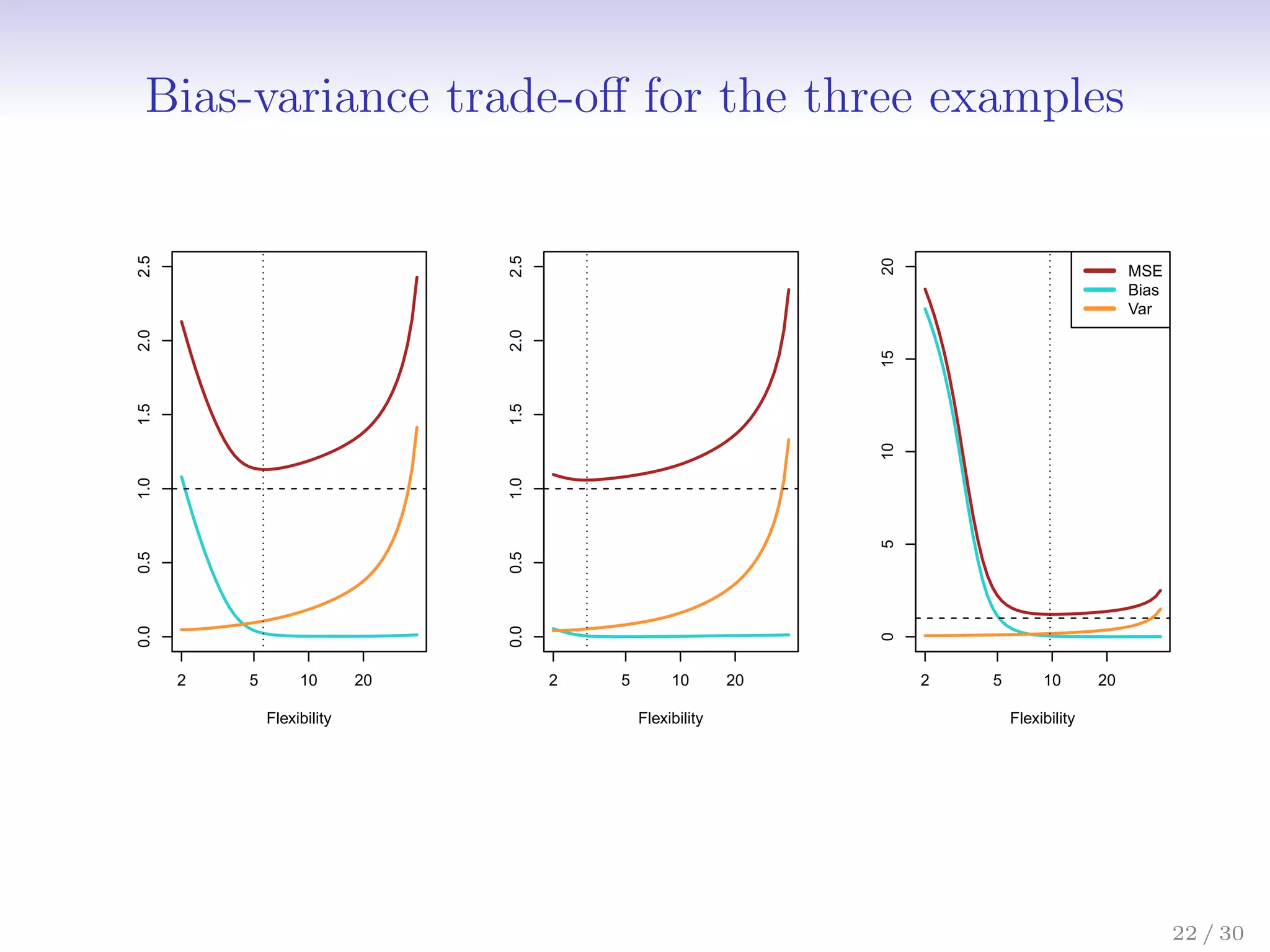
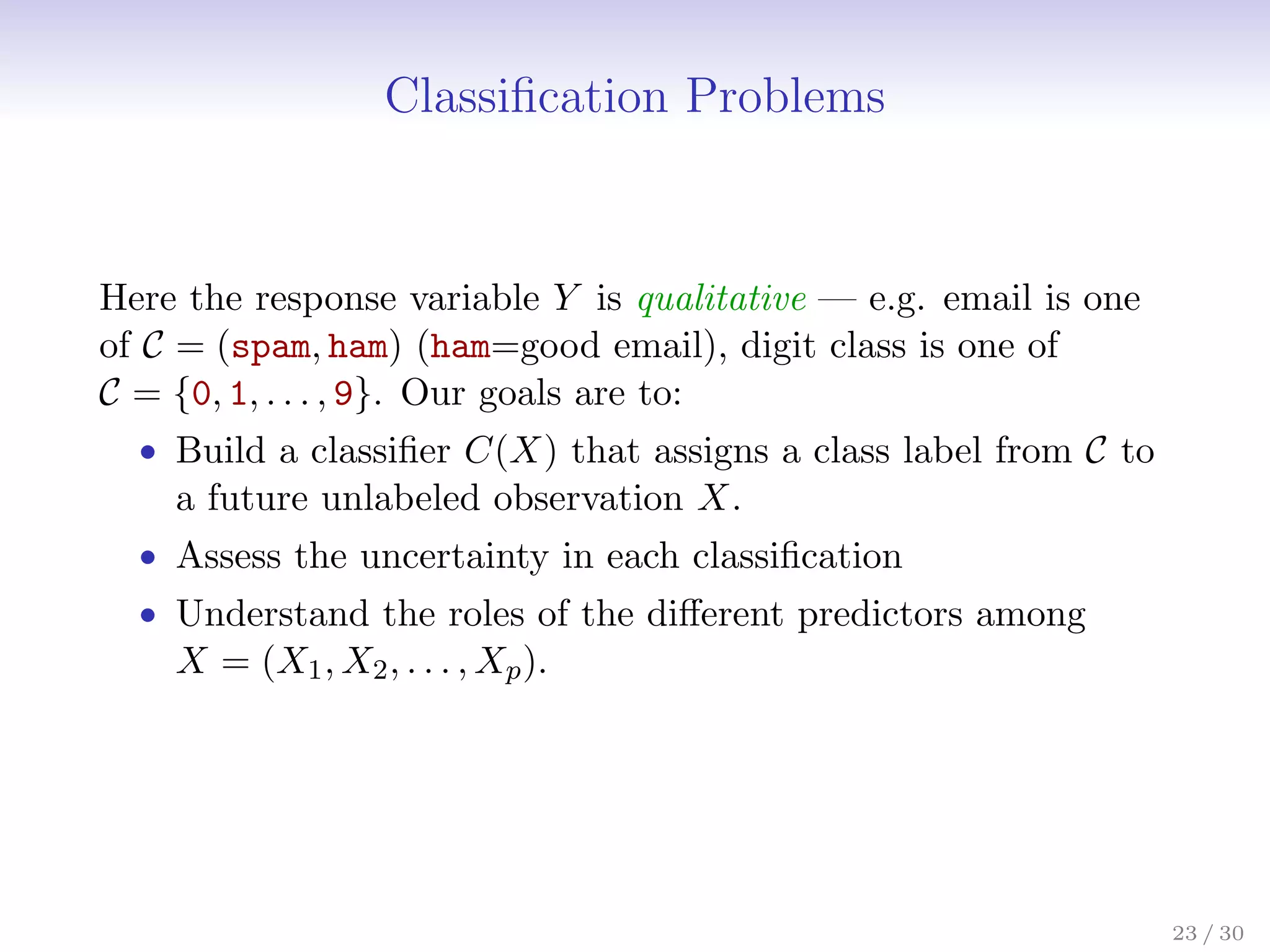
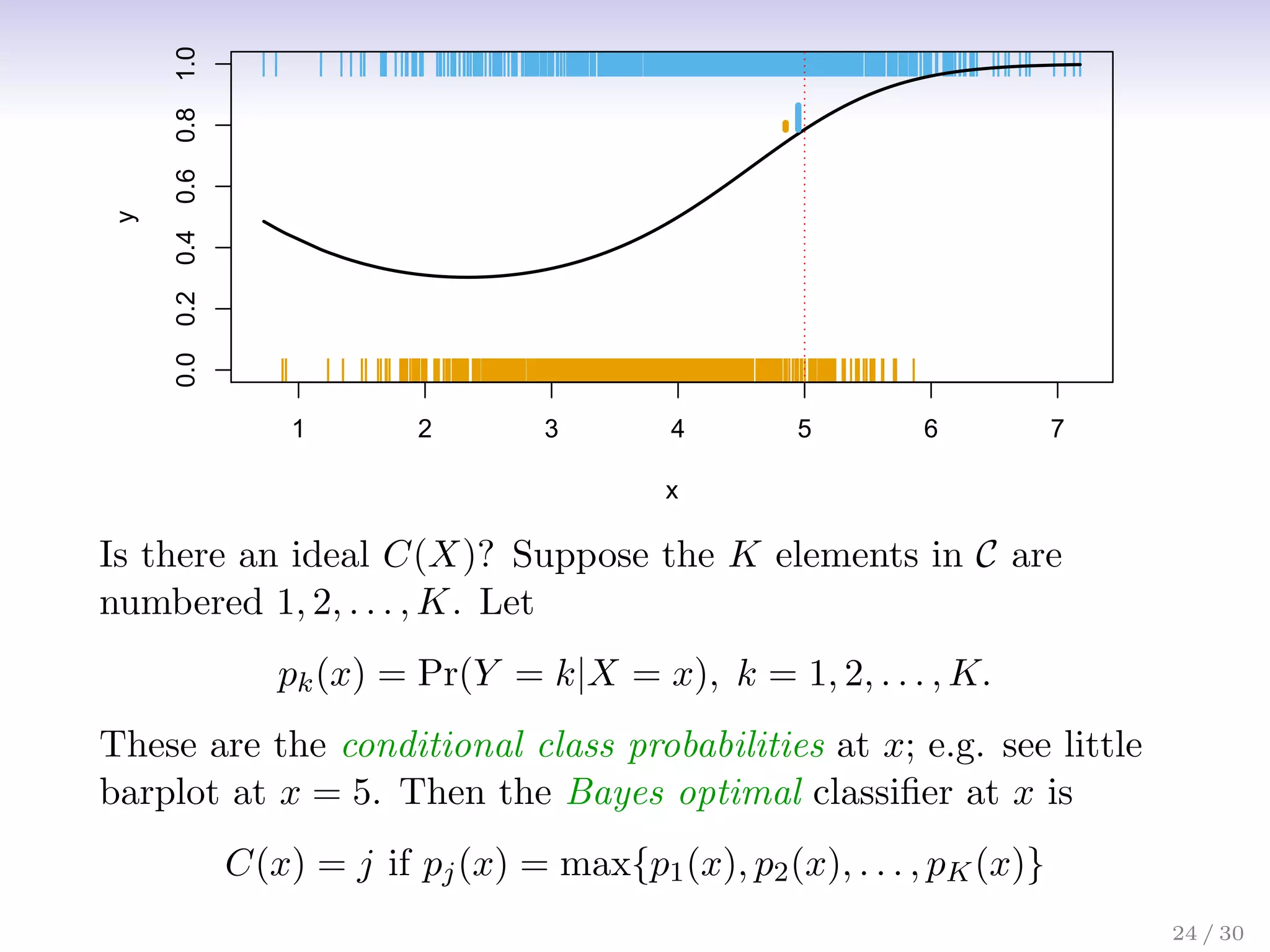

![Classification: some details
• Typically we measure the performance of Ĉ(x) using the
misclassification error rate:
ErrTe = Avei∈TeI[yi 6= Ĉ(xi)]
• The Bayes classifier (using the true pk(x)) has smallest
error (in the population).
26 / 30](https://image.slidesharecdn.com/ch2statisticallearning-230117050556-1e15522a/75/Ch2_Statistical_Learning-pdf-32-2048.jpg)
![Classification: some details
• Typically we measure the performance of Ĉ(x) using the
misclassification error rate:
ErrTe = Avei∈TeI[yi 6= Ĉ(xi)]
• The Bayes classifier (using the true pk(x)) has smallest
error (in the population).
• Support-vector machines build structured models for C(x).
• We will also build structured models for representing the
pk(x). e.g. Logistic regression, generalized additive models.
26 / 30](https://image.slidesharecdn.com/ch2statisticallearning-230117050556-1e15522a/75/Ch2_Statistical_Learning-pdf-33-2048.jpg)

